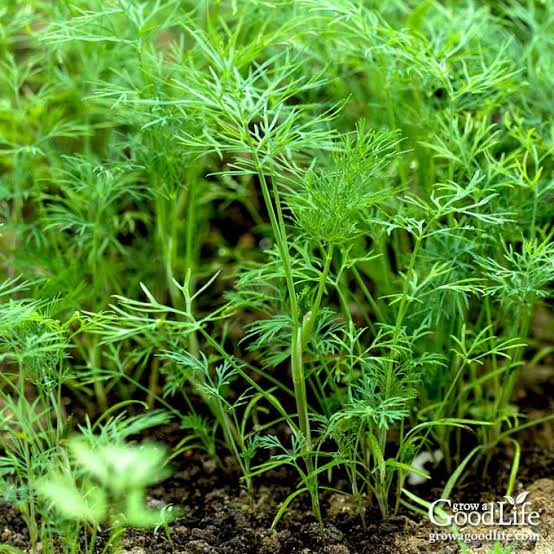If you’ve ever wanted to add a burst of fresh, aromatic flavor to your kitchen garden, dill is the perfect herb to start with. Known for its feathery leaves and refreshing taste, dill pairs beautifully with seafood, potatoes, pickles, salads, and soups. Even better, it’s wonderfully easy to grow — whether you have a spacious backyard, a balcony pot, or a sunny indoor windowsill.In this complete guide, you’ll learn Make it easy: Dill plant how to grow! through simple, practical steps. From sowing seeds to harvesting your first flavorful bunch, this guide makes dill-growing effortless for beginners and seasoned gardeners alike.Why Grow Dill?Before we dive into steps, here’s why dill is worth growing:Fast-growing herb — Perfect for busy gardeners.Minimal maintenance — Thrives even with basic care.Great flavor — Ideal for fish dishes, sauces, pickling, and herb butters.Pollinator-friendly — Attracts bees and butterflies.Works in garden beds or containers — Very adaptable.If you’re looking for an herb that gives you a lot with very little effort, dill is a fantastic choice.How to Grow Dill Easily (Step-by-Step Guide)Step 1: Choose the Right Dill VarietyUnderstanding the type of dill you want to grow helps you plan your garden better.Most Popular Dill VarietiesBouquet Dill — Great for pickling and seeds.Fernleaf Dill — Perfect for small pots; compact and bushy.Mammoth Dill — Tall variety; excellent for gardens.Long Island Dill — Classic choice for pickles and cooking.For small indoor spaces, Fernleaf Dill is ideal. For outdoor gardens, Bouquet or Mammoth is a good choice.Step 2: Pick the Best Growing LocationDill grows best in:Full sunlight — at least 6 hours daily.Light, well-draining soil — rich but not heavy.Sheltered areas — Dill stems are delicate and can topple in strong winds.Good Indoor ConditionsA south-facing window (US/Canada) or sunny conservatory (UK).Pot with drainage holes.Rotate the pot weekly so the plant grows evenly.Good Outdoor ConditionsGarden beds, raised beds, or large containers.Plant away from strong drafts.Soil should be loose and easy for roots to spread.Step 3: Prepare the SoilDill prefers:Slightly acidic to neutral soil (pH 5.5–7.0)Light, airy soilOrganic matter for nutrientsSoil Prep TipsAdd compost before planting.Avoid clay-heavy, compacted soil.Mix in sand or perlite for better drainage.Step 4: Planting Dill SeedsDill grows best directly from seeds — it doesn’t like transplanting.How to Plant the SeedsPlant seeds ¼ inch (0.5 cm) deep.Space seeds 12 inches apart.Water gently after sowing.Seeds germinate in 7–14 days.Inside PotsPlant seeds in a pot at least 8–12 inches deep.Keep soil moist but not waterlogged.Dill has long taproots, so deep containers work best.Care Tips for Growing Dill SuccessfullyWateringDill enjoys regular watering but hates soggy soil.Watering GuideWater when the top inch feels dry.Reduce watering during cool, cloudy days.Water at the base to avoid leaf fungal issues.Sunlight NeedsTo get bushy, flavorful dill, ensure:6–8 hours of full sun dailyBright grow lights if natural sunlight is weakIndoor dill often needs supplemental lighting during winter in Canada or the UK.Fertilizing DillDill doesn’t need heavy feeding.Fertilizer TipsUse compost or mild organic fertilizer every 4–6 weeks.Too much fertilizer results in weak flavor.Pruning and PinchingPinching encourages leafier growth.How to Pinch DillTrim the top leaves once plants reach 6 inches tall.Clip off flower buds (unless you want seeds).Cut stems just above leaf nodes.Regular pruning keeps plants compact and productive.Common Problems and Easy Fixes1. Yellowing LeavesPossible causes:OverwateringLow lightPoor soilFix: Adjust watering, improve sunlight, and loosen the soil.2. Drooping or Falling OverOften caused by:WindShallow soilLack of supportFix: Use stakes or plant near a fence.3. Bolting (Flowering Too Early)This reduces leaf flavor.Fix: Pinch flower buds early and keep the plant cooler in summer.Harvesting Dill the Right WayTo make it easy: Dill plant how to grow, harvesting must be done correctly.When to HarvestStart when the plant is 6–8 inches tall.Earlier harvesting gives the freshest flavor.How to HarvestCut stems in the morning for best aroma.Snip from the top to encourage new growth.Never remove more than one-third of the plant at once.Harvesting Dill SeedsAllow flower heads to form.Collect seeds when they turn brown.Dry seeds in a paper bag for storage.Dill seeds are perfect for pickling and seasoning dishes.Using Fresh DillFresh dill is fantastic in:Salmon and seafood mealsPotato saladsPicklesRanch-style saucesEgg dishesGreek tzatzikiSoups and stewsYou can also freeze dill easily — great for winter use in colder climates.Practical Tips for Growing Dill Anywhere✔ Choose deep pots for indoor growing✔ Rotate pots regularly✔ Pinch flower buds to extend leaf production✔ Keep soil airy and never compact✔ Give outdoor dill support to prevent falling over✔ Start new seeds every few weeks for continuous harvestConclusion: Make It Easy — Dill Plant How to Grow Like a Pro!Growing dill doesn’t have to be complicated. With a little sun, good soil, and consistent watering, this delicate herb grows quickly and rewards you with incredible aroma and flavor. Whether you’re gardening in the United States, the United Kingdom, or Canada, following these simple steps makes it effortless to enjoy your own fresh dill all season long.

